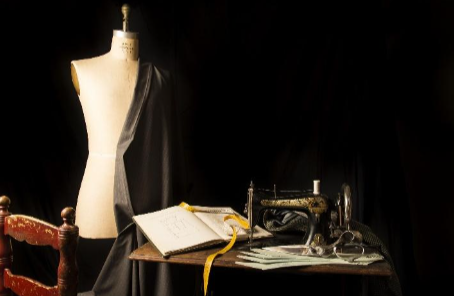Industry Jobs | Costume Designer
/As one of the premier studio production companies in New York, Broadway Stages works to meet the growing needs of the film and TV industry while also focusing on the needs of our community. We provide the industry with a soundstage or location where they shoot their scenes, but they also need a skilled and experienced workforce. In this series, we look at the various jobs that make a production come to life. We hope it provides insight and encourages you to consider a career in the film and TV industry. This week, we look at the role of costume designer.
What does a Costume Designer do?
Our last post in this series focused on the props manager role and how they and their crew enhance the physical set and scenery that the actors interact with, further creating a believable world within the production. Additional physical items on the set include the wardrobe and accessories worn by the actors. These items are managed by the costume designer and their team, which can include wardrobe supervisors and trainees, seamstresses, and costume assistants. What an actor wears is an important element of telling a production’s story and shaping an actor’s character. From ensuring historical accuracy and reflecting a character’s evolving look over a specific timeline, to determining color palette, materials used, and more, the costume designer is a key art department role that works with other departments to develop and execute a cohesive look and feel in a production.
Job description
The costume designer works closely with key roles, including the director, production designer, and director of photography, and maps out plans for each character’s costume (called costume plots). The costume plots reflect color, style, and character evolution across the various scenes. This stage requires research to ensure the costumes and the garment construction methods are accurate to time period and location being depicted. The costume designer provides hand drawn or digital renderings of the costumes to the director to secure their approval. As they execute the costume plan, the costume designer will need to determine whether the costumes are to be bought or made, arrange for purchase or creation, and see that the actors get fitted. Additionally, they will likely be on set when the costumes are first worn, to ensure proper fit and the actor’s comfort in wearing the garment. Also, as a leadership role, the costume designer will be responsible for budget management, scheduling, hiring suppliers and costume makers, selling, or otherwise disposing of the costumes, and ensuring safety protocols are followed by their team. Hear firsthand about what it is like to be a costume designer in this Costume Designers Guild interview with Academy Award-winner Alexandra Byrne (“Elizabeth,” “Elizabeth: The Golden Age,” and “Mary Queen of Scots”), in which she discusses her experience, key aspects of the job, and advice to those pursuing a career as a costume designer.
How do I become a Costume Designer?
As with other lead industry roles, costume designers need a broad range of skills, knowledge, and experience. It is important to be creative, with an understanding of fashion, color, fabric, clothing construction, and costume history. Also, it is important to possess the ability to draw, and it is useful to know how to use software to create digital renderings. As a lead role, it is important to have good planning, organizational, and communication skills when working with team members and others. Being skilled at conducting research and having a knowledge of industry safety protocols is also necessary.
No formal educational degree is required for this role, but it can be helpful to attend design school to learn needed skills and to get work opportunities or apprenticeships through the school. Experience in related areas including fashion and theatre or graphic design can also be helpful for someone wishing to break into a costume design career. A good way to enter the career path for this role is to start as a production assistant and work your way up through various costume related roles, gaining experience and contacts as you develop your career, and creating a portfolio to display your work. Working other jobs on set can be helpful to learn the various aspects of film production that a costume designer will need to be familiar with.
More information. Find advice, and learn more about the role of a costume designer, including job responsibilities, skills, and experience needed, at Backstage (here and here), Careers in Film, Mandy, MasterClass, Media Match, and Screen Skills. Learn about film and TV industry jobs, training, and more in the Broadway Stages’ Industry Resource Guide. Our guide provides information about industry focused job posting sites; links to general recruiting sites; education and training programs; and state, city, and borough industry information.






